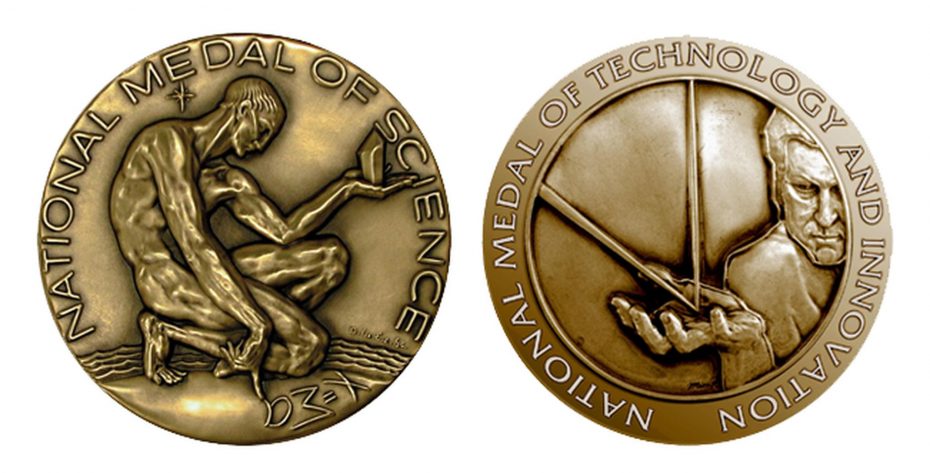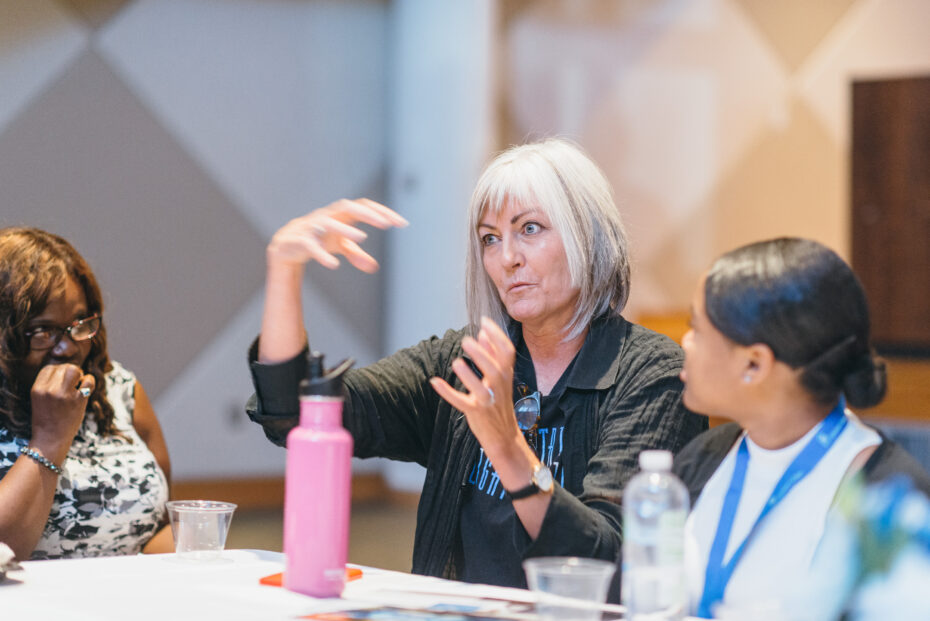Filmmaking requires a creative and artistic vision — but increasingly, making movies requires technology and innovation to bring wonders to life on the big screen.
“When you see incredible films, you don’t [always] think about how much technology goes on behind the scenes,” said Bridgette Powell, a software engineer at Industrial Light & Magic (ILM).
“The idea of working on a movie like ‘Toy Story’ was really cool to me,” Powell said of her early interest in the film industry. “But not so much in a creative way because I knew internally I was always very technically oriented.”
ILM is a motion picture visual effects company founded by “Star Wars” creator George Lucas in 1975. ILM earned the 2004 National Medal of Technology and Innovation for its industry defying work in visual effects technology. At ILM, Powell writes code to develop tools that streamline artists’ work in the filmmaking process, seamlessly blending art and technology.
Powell, along with ILM’s Ryan Smith and Jean Bolte, shared their diverse experience navigating and excelling in the film industry at an intimate discussion at Spelman College, hosted by the National Science and Technology Medals Foundation. They noted building relationships, staying up-to-date with the latest trends and technology — and applying both to creative projects is the recipe for success.
Smith is a manager and human resources business partner at ILM, ensuring the company is attracting artistic and technological talent to their visual effects teams — and helping artists and engineers grow in their careers.
“I’m doing something in a creative field, helping to support creative [people] and make magic on the screen, which is awesome,” Smith said.
“We help to develop talent. That’s the thing I’m most passionate about,” he added. “I meet with business leaders as well and individual contributors, artists, and engineers about: Where do you want to go in your career, and how can I help map that out for you?”
Bolte has created creatures and make-up for films including “Labyrinth,” the “Star Wars” prequels, “Men in Black” and “The Princess Bride.”
Her work shows how an artist’s career can bloom when blended with emerging technology. Bolte started working as a model maker for ILM in 1987. By 1992 she was model project supervisor for ILM’s Model & Creature shop. In 1994, she moved to the Computer Graphics department to work as a texture painter, utilizing ILM’s proprietary digital painting software.
“What really helped me, and what I tell students, is [that] I did my own work,” Bolte said. “I had sculptures, paintings, drawings. I had my own portfolio so that when a call came, I had something to show. I didn’t have to wait for the job and then sort of train on the job. I came ready.”
“Do your own work. You can make movies on your phones now. You can edit them. You can do your own drawings. You can sit in front of a drawing board and generate work and put it out there. There are all sorts of ways to show your work now that didn’t exist [before],” Bolte added.
As an artist, Bolte depends on Powell and her team to achieve unthinkable visual effects that filmmakers ask for on a project.
“[Bridgette’s] work in research and development, technology, writing code, writing programs — that’s our life’s blood as artists in the company. We cannot work without what Bridgette does, and you can’t work well without having an excellent collaborative relationship,” Bolte said. “I also think that what Bridget does is truly visionary — in that you may not necessarily see yourself as artistic, but I think it is. You are able to look ahead and think of where we have come technologically, what are the things that clients have seen, and where do we need to go now.”
“The clients always want more,” Bolte added. “They want it quicker; they want it cheaper. And they want something they’ve never seen before. There is a tremendous pressure for us to maintain that rapport [with R&D].”
Powell said for software engineers to excel in this type of creative environment requires “the curiosity to want to solve those problems.”
“There is a social aspect to it …[going] to production and [talking]to the artist and figuring out what workflows they are struggling with and what is taking them a long time,” She said.” Then, we can develop something that turns five steps into one.”
Another key to success in the industry is looking for guidance and advice from others, whether they are mentors or peers, that can offer insight.
“I still have the same mentor for the last ten years,” Smith said. “Mentorship is how you survive this journey, [in] my opinion. From having someone to bounce ideas off of, that has gone through the same experiences you have, and can keep it real about the trials and tribulations of the career — of any career field.”
“We’re all going to go through valleys, through our jobs. Knowing how to navigate those is really using a mentor, for me,” he added.
Powell said she instead looks to leadership to absorb their career experience and advice, whether or not they work directly with technology.
“I don’t have [a mentor] in the traditional sense, but what I like doing is reaching out to leadership at the company that I’m employed at and just getting their experience, one-on-one and learning: What is your vision for the company? What are you looking to do?” she said. “I like seeing what their story is.”
Bolte said you can learn just as much from coworkers and competition, to improve skills and avoid pitfalls.
“I’ve never had a formal mentor,” she said. “I’ve had many, many people who have helped me. I’ve also had many mentors, they just didn’t know it.”
“I have always looked for the person who I might have considered the biggest threat or challenge to my positions and watched them, go and get to know them and learn as much as I can,” Bolte said. “Those are the people who are really going to teach you and give you the best lessons.”
She said that’s one reason she has stayed with the company, learning and growing.
“ILM has always had this culture that if you need something if you have a question, there is going to be a hand that is going to reach out to you — and that’s why I’ve been there for so long,” Bolte said. “There are mentors all around me because I am amongst people who have such incredible talent and experience.”




